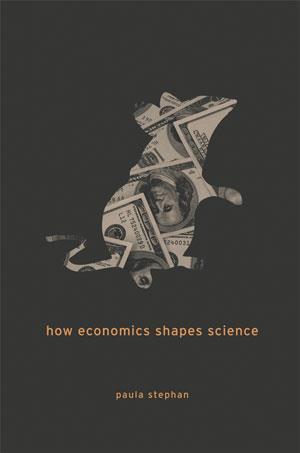Paula Stephan
Harvard University Press
2012 | 330pp | £33.95 (HB)
ISBN 9780674049710

Science and scientists cost money. Particle accelerator physicists and their apparatus are expensive, but even theoreticians need space, salary and computing resources. Academic research is influenced by total funding and its distribution – choices are made between big versus small science, favoured research fields and ultimately individual projects. In return for government funding, basic science can stimulate economic growth and seed spin-out companies, despite the gap between a discovery and its application.
Paula Stephan is a longtime student of how governments and universities allocate resources and how scientists respond to this. In a lively but scholarly book, devoid of economics jargon, she reflects knowledgeably on scientists’ incentives of recognition, salary and repeat grants.
Concentrating on the US, Stephan is aware of the differences in Europe: more research institutes, EU international collaboration grants, and the rarity of academics raising all their salary from grants. She sees some similarity between sports tournaments and scientists’ rewards – participants below the top levels receive acclaim and satisfaction in their careers – and suggests that lavish US departments are like shopping malls in the way they entice investigators. She believes defence and some health research need public funding, but grant mechanisms favour risk-avoiding incremental research rather than innovation.
Stephan’s outlook for improvement is slightly disappointing. She is not in favour of PhD chemists becoming science teachers and is suspicious about excessive lobbying for funding of biomedical research over other disciplines.
To help decouple research from training, she favours more US research institutes (fostering interdisciplinary research), scoring grant applications partly on PhD placement data and making competitive training awards to graduates tenable at any university. She suggests that prestigious prizes for groups of scientists could encourage collaboration and research across disciplines.
Writing in a ‘somewhat engaging manner’ (her phrase), Stephan clarifies her aims and conclusions in each chapter, assessing the economic factors that influence research. One hopes that senior scientists and administrators will consider her suggestions for improving the economic efficiency of research.
Purchase this book from Amazon.co.uk.












No comments yet